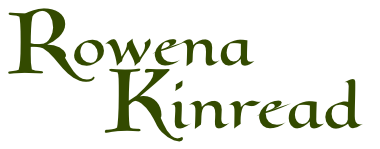Let Us Talk of Many Things
Guest Post: https://ofhistoryandkings.blogspot.com/
THE SCOTS OF DALRIADA AND POISON.
Did the Gaels know about poisons? The answer is yes! The Greeks wrote about poisons as early as the 5th century BC. In Athens, in the ancient world, a drink composed of strongly poisonous hemlock was used at executions. The fruit was shelled, crushed and the powder sprinkled upon a beaker of water. The condemned drank the beaker empty, thus killing himself.
In the Scots of Dalriada, Cartan murders his brother Mongan using hemlock. He knows that Mongan is wary of him, and deceives his brother by feeding the hemlock to quail which Mongan then eats.
This condition is called coturnism. It was certainly known by the 4th century BC to the ancient Greek (and subsequently Roman) naturalists, physicians, and theologians. The Bible mentions an incident where the Israelites became ill after having consumed large amounts of quail in Sinai. Early writers used quail as the standard example of an animal that could eat something poisonous to man without ill effects for themselves. Most famously Socrates was supposed to have met his death this way in 399 BC. But not only were the Greeks, Romans and monks learned; the ancient druids were accomplished herbalists and knew not only poisons but also healing remedies for humans and cattle alike.
Later in the novel Beth starts to search for and pick mushrooms, to validate her absence. Briefly she wonders if she should mix some poisonous fungi amid the cep, chicken of the woods and chanterelles she finds, but dismisses the thought immediately. The cook would notice and anyway, the king didn’t eat alone.
Again poisonous fungi were not unknown to peoples living in 5th century Ireland and Scotland.
Destroying angel (Amanita virosa) is a pure white, deadly poisonous mushroom. Apparently, just one piece of destroying angel in a soup made from otherwise edible species is enough to kill everyone who eats the soup. Young specimens like this are sometimes confused with puffballs or other non-deadly mushrooms
Deadly webcap (Cortinarius rubellus) is rare in the UK, but responsible for several deaths in Europe. People have eaten it after mistaking it for chanterelle.
Death cap (Amanita phalloides) Death cap is responsible for most fatal mushroom poisonings around the world.
Fool's funnel (Clitocybe rivulosa) is also known as the sweating mushroom, describing its potentially deadly effects. Fool's funnel often grows alongside the edible Scotch bonnet (Marasmius oreades) so take care if you’re on an edible mushroom foray.
Angel's wings (Pleurocybella porrigens) This distinctive pure white bracket-like fungus grows in clusters on decaying conifer wood. It’s quite common in the Scottish Highlands and in Cumbria but it’s rare elsewhere. Just appreciate it for its beauty. Symptoms: cases of poisoning after ingesting this species have been recorded. Chemicals in the mushroom are toxic to the brain and can cause permanent brain injuries or possibly death.
Towards the end of the book, the druidess Birga-one-tooth, poisons Beth and Rhianna with a cheese containing the highly poisonous Lily of the Valley. It was no mistake, although the leaves of Wild Garlic and Lily of the Valley look alike and can be confused with one another.
Excerpt:
‘In one corner of the market, they see an old lady with just one small table and a few cheeses. She has a crooked back and is dressed in rags. Rhianna nudges Beth.
“The poor dear, we should buy a cheese from her.” They approach her table. She has prepared a plate with small pieces of cheese for people to taste before buying. She holds the plate out towards Rhianna and Beth, her hand shakes with the effort.
Will you try a piece of wild garlic cheese, my Ladies?” she asks.
Rhianna notices she has only one tooth left in her mouth.
They both take a small piece and chew it carefully. “Why it is absolutely delicious,” Rhianna compliments the woman. “We must buy one, Beth.”
Beth agrees and starts to pick a cheese up from the table.
“No,” the woman says, reaching down below the table and retrieving a cheese from a box. “It has been in the sun, take this one!”’
At the latest after the publication of the Harry Potter books by Joanne K. Rowling, children worldwide have become fascinated by poisonous plants. Alnwick Castle was used as a stand-in for the exterior and interior of Hogwarts in the Harry Potter films. Next to the castle are Alnwick gardens and what could be more appropriate here than a Poison Garden. Between roses and fountains is a special place, a theme garden with over one hundred deadly poisonous plants, the so-called Poison Garden.
It is disturbing to know that in a survey carried out by Alnwick Gardens, children and youths were most interested in: how a plant kills someone, how one dies and how long it lasts until the person is dead. Perhaps you should keep this in mind the next time your child asks for a pocket-money raise!



